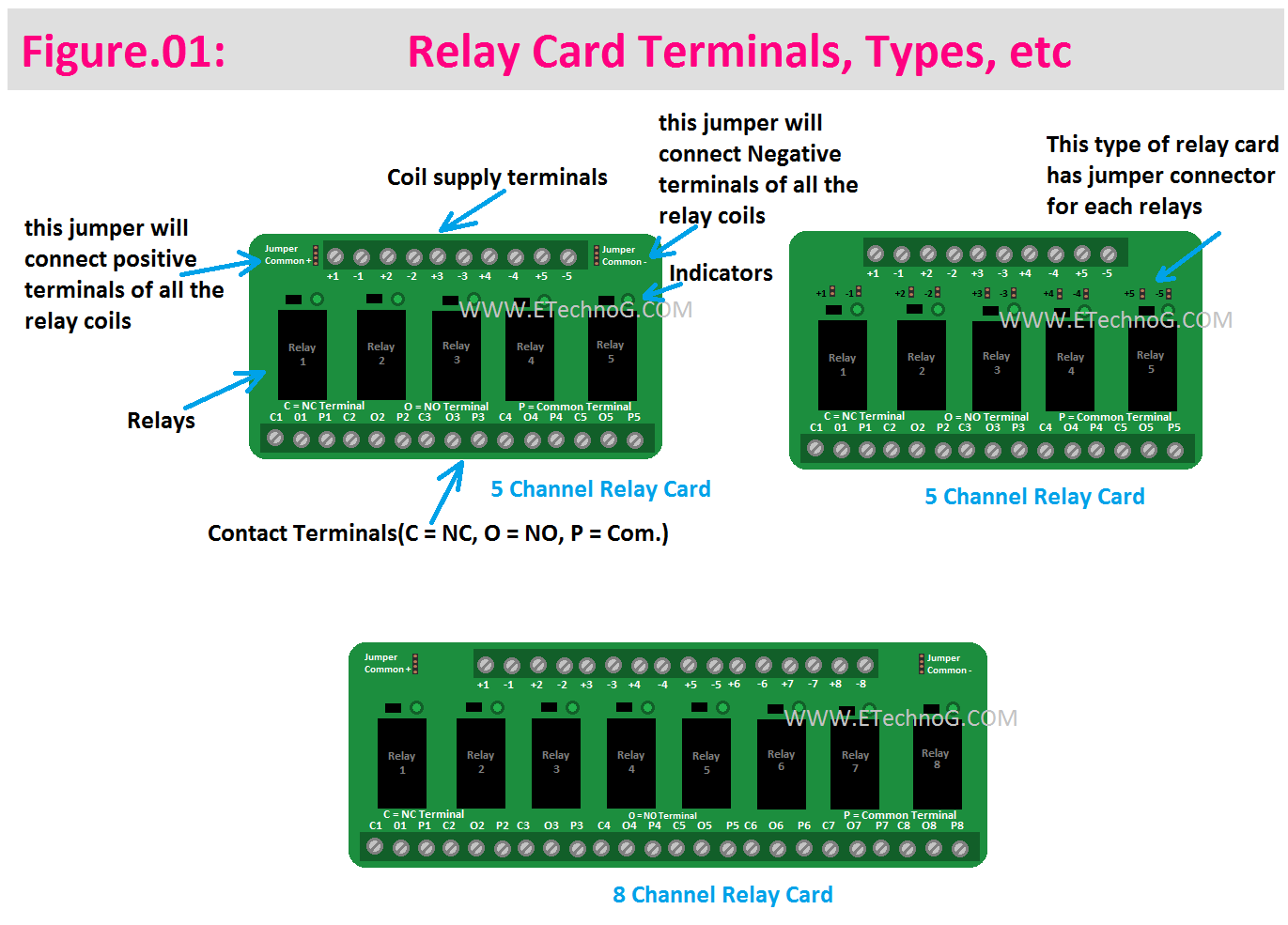Relay Card Wiring Diagram and Connection Procedure
Hey, in this article, we are going to see the Relay Card Wiring Diagram and Its Connection Procedure. A relay card is also known as a relay board or relay module. It is basically an electronic device used to control electrical circuits by using electromechanical(mostly used) or other types of relays. We know that relays are switches that are operated by an electrical signal and they control higher voltage or current circuits with a lower voltage or current signal. Relay cards are commonly used in various applications where remote or automated control of electrical devices is required.
Relay cards come in different configurations with varying numbers of relay channels. Common configurations include single-channel, multi-channel (e.g., 4-channel, 8-channel, or 16-channel), and even larger arrays for industrial applications. Relay cards are typically controlled through low-voltage inputs, such as a digital signal or a voltage level using different devices such as microcontrollers, PLCs (Programmable Logic Controllers), or other automation systems. The relays on the card can switch higher voltage and current so we can use them to control lights, motors, pumps, heaters, and other electrical devices. In simple words, we cannot connect high-power loads directly to the controlling devices which is why we used Relay Cards.
Relay Card Terminals Identification and Types
When we are going to make the connection for a relay card, we must know the proper terminal identification. Also, as we know Relay cards come in different numbers of relay channels so in the below figure we have shown the relay cards with different channels and their input and output terminal identification.
Actually, the Channel refers to how many relays a relay card contains. For example, a 5-Channel Relay card contains 5 individual relays. Similarly, an 8-channel relay card contains 8 number of individual relays. According to the number of channels, you will get so many varieties in the market.
Relay Card Connection Procedure
The connection procedure for a relay card may vary depending on the specific model of the card, types, manufacturer, and design for a particular application. So, here I will provide you a general guideline for connecting a relay card to control electrical devices or circuits. It is always recommended to refer to the manufacturer's documentation for your specific relay card for detailed instructions and safety guidelines.
Anyway first of all Identify the Relay Coil Terminals. Then connect these relay coil terminals to the low voltage (e.g. 5V, 12V, or 24V DC) control supplies such as PLC or any other devices
You will see most of the Relay card has Jumper Connectors to interconnect the relays. Some type of relay card has only two jumper connectors(one for positive and one for negative). Connecting the positive jumper connector will short the positive terminals of all the relays and connecting the negative jumper connector will short the negative terminals of all the relays. In some types of relay cards, each relay has individual jumper connectors. In this type of relay card, you can interconnect only those relays you want by connecting/disconnecting individual jumper connectors.
You will also see all the relays on the relay card have their own NO, NC, and Common terminals. You can connect these contact terminals to control loads (e.g. lights, contactors) with high voltage and high current power supplies (120V DC, 230V AC, etc.).
Relay Card Wiring Diagram
Here, in the below wiring diagram, we have used a 24V DC-controlled 8-Channel Relay Card to control a Motor. In practice, there may be no application of this wiring diagram it is just designed to understand the connection procedure and working principle of a Relay Card.
Here, you can see we have connected the motor with the power source through an SSR(solid state relay). And, we have connected the control terminals of the SSR to a 230V AC power source through the relay Card(Common and NO terminals). The coil terminals of the Relay card are connected to a 24V DC Power source(SMPS) through an On/Off Selector Switch.
So when we turn on the selector switch the 24V DC supply will applied to the relay card and it makes its NO contact into NC and the SSR will get the 230V AC control voltage. Once the SSR gets the control voltage it will conduct the main power supply from the power source to the motor. Now, you may understand how the relay card works with a low-voltage power supply to control a high-voltage system.
Read Also:



